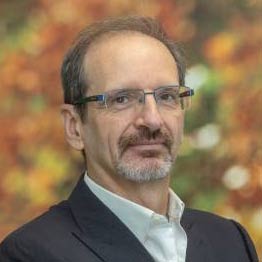19/09/2020
Published in
El Norte de Castilla
Arturo Ariño Plano
Ecologist and director scientist of the Science Museum of the University of Navarra.
 Thirty-three years ago the first cafeteria opened in Tokyo where for two euros a waiter served the customer three minutes of oxygen in a glass cup connected to a hose. For 30 euros today you can buy a can with eight liters of compressed air from the Rocky Mountains. At half a liter per breath, enjoy an hour of that pristine Canadian air for two thousand.
Thirty-three years ago the first cafeteria opened in Tokyo where for two euros a waiter served the customer three minutes of oxygen in a glass cup connected to a hose. For 30 euros today you can buy a can with eight liters of compressed air from the Rocky Mountains. At half a liter per breath, enjoy an hour of that pristine Canadian air for two thousand.
Snobbery aside, the paradox of these absurd "clean air" cans is that they represent the perfect vicious circle: Bringing them by boat and truck generates precisely the air pollution from which those who buy them seek to escape.
The air is very similar everywhere. We will always find 78% nitrogen and 21% oxygen, which we need to breathe. But it is in the smallest details (less than 0.1%) that the differences skyrocket. Apart from water vapor, it is gases such as nitrogen, sulfur or carbon oxides, ozone, or components such as particulate matter that make the difference between the air that we perceive as pure in a mountain and the polluted air from which the Tokyoites fled and which continues to haunt the inhabitants of many cities.
Air quality has well-known effects on health. Although there are some naturally occurring components - such as the pollen that causes allergies, the Saharan dust brought in by the winds, or the sea salt spat out by the breeze - many of the components we are concerned about are produced mainly by burning fuel. Wherever there are boilers and engines, there will be air pollution.
The perfect storm for air quality converges in cities, where most of us live. In addition to a higher density of people, there is also the need to move around, and in large cities, over long distances. Above a certain distance threshold, these trips are mainly made by means of transport, especially in cities with a model in which the centers of work or study are separated from residential areas (most modern cities that have grown horizontally). The means of transport, today, is an engine and most of the engines, today, are combustion engines. And if the public transport system is deficient or inefficient, then the transport of choice is the private vehicle.
In the city, and especially in the large modern city, there are many moving sources of pollution (vehicles) that move over longer distances the wider the city is, with other fixed sources (boilers in houses or industries) that are larger the more people are crowded together in blocks, in the same shared space but compartmentalized by buildings, which slow down the wind that would disperse the pollutants.
And here we have the perverse equation of air quality and transport in the city. Pollution is directly proportional to the amount of emission and inversely proportional to the amount of dissipation. Now, pollutants are dispersed with the linear dimension of the city (the front it offers to the wind), but they are generated with the square of that dimension (by its surface) or even with the cube in the case of cities of development vertical. This imbalance is the one that, historically, turns pollution in cities into an exponential problem, especially critical in cities where more population is concentrated. As the factor that grows fastest with the size of the city is transport intensity, it is precisely in this factor that we have the best chance of achieving the greatest effect if we want to bend the equation without completely redesigning our cities and our way of life.
For equal transport needs, only transport that is both progressively less dependent on fossil fuel-based motorization and involves moving less mass per person moved (each kilo moved requires additional energy) can achieve this. issue Both the development of an efficient and sustainable public transport network and the adoption of lighter means of transport that are less dependent on combustion engines (such as bicycles or other vehicles from mobility staff , electrified or not), have the capacity to reduce the total number of exhaust pipes per unit area and the total mass in motion and, thus, facilitate that the remaining pollution is dispersed more rapidly while we continue to move towards the ideal of not even generating it.
Traditional combustion engines will sooner or later have to disappear from our cities. It remains to be seen which will be the possible substitutes to replace them, but it is enough to go out in the street (when the confinements allow it) to perceive that they are already beginning to be here.
